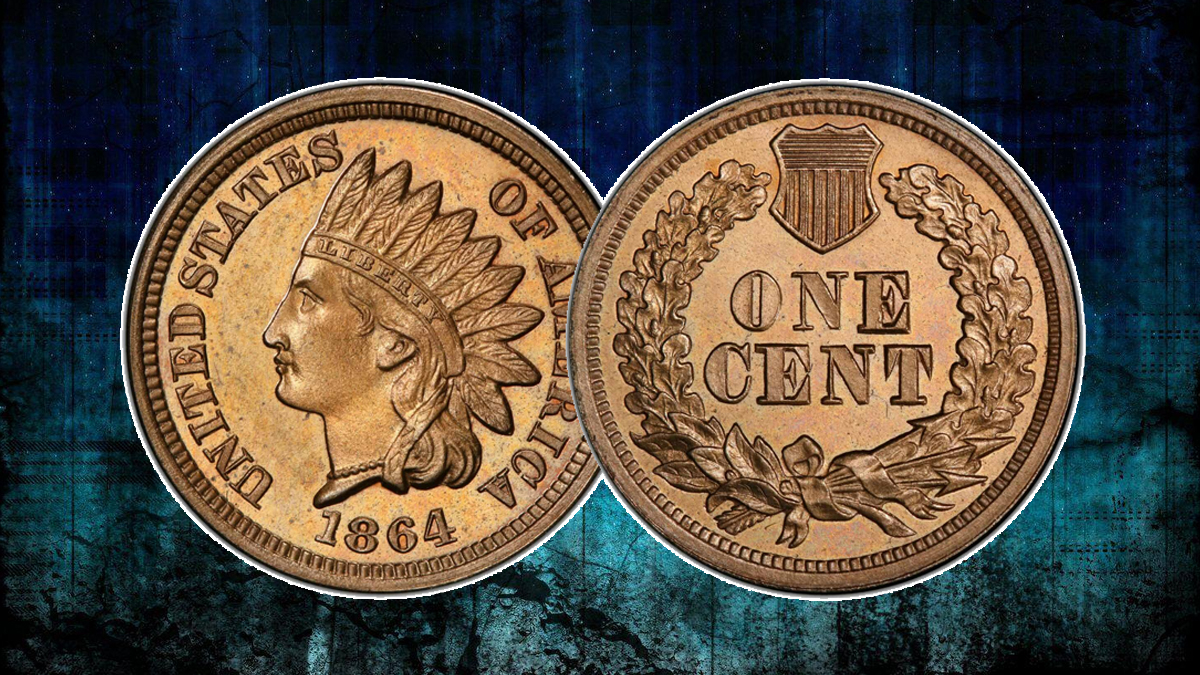
You want to know about the most valuable pennies. We have a list of the top 11 rare pennies of the twentieth century. Small cents are about 19.1-millimeter diameter pennies produced by the United States Mint since 1856. These coins may be hiding inside an attic box, or even inside your penny box.
Even tiny bits of copper can be worth tons of money. The rarest pennies can go from $100,000 to nearly $2 million. Rarity is a big deal for their value. So is their condition – ones in good shape are worth more.
As a collector, you might end up buying from a coin dealer or at an auction. People love pennies, so top-quality ones can be super expensive.
Top 11 Rare Pennies Of The Twentieth Century
- 1856 Flying Eagle Cent
- 1864 Indian Head Penny-“L” on Ribbon
- 1872 Indian Head Penny
- 1877 Indian Head Penny
- 1909-S VDB Lincoln Penny
- 1914-S Lincoln Penny
- 1914-D Lincoln Penny
- 1926-S Lincoln Penny
- 1943 Lincoln Penny (Bronze Alloy)
- 1944-D Lincoln Penny (Zinc-coated steel)
- 1969-S Lincoln Penny-Doubled Die Obverse
1. 1856 Flying Eagle Cent Certified By Professional Coin Grading Service (PCGS)
- Value: $172,500
- Grade: PCGS MS-66
- Sold: January 2004 at Heritage Auctions, Orlando, FL, FUN Signature Auction
The price of copper rose more to the point in 1856 where one penny was valued more than another. Before this day, pennies were almost the size of a half-dollar, heavy and large.
The United States Mint planned to make the penny shorter (to its present diameter) to cut costs. However, the action needed permission from Congress, so the mint made a batch of approximately 800 new pennies and provided them to the lawmakers.
These coins are extremely rare whether they’re found in circulated or uncirculated shapes. When an original work of art like this one comes on sale, the prices will undoubtedly set records.
2. 1864 Indian Head Penny–”L” on Ribbon Certified By Professional Coin Grading Service (PCGS)
- Value: $161,000
- Grade: PCGS PR-65 Red & Brown
- Sold: October 2011; Heritage Auctions, Pittsburgh, PA, Signature Auction
The American economy was in poor condition in 1864, and the Civil War continued to be running. As a means of protecting their wealth, many people collected gold, silver, and copper coins. Due to this, it became difficult for the federal government to obtain the metal needed to make coins.
James B. Longacre, a mint engraver, made the Indian Head cent, which was first issued in 1859. An “L” had been added to the length of the ribbon in the military hat on Lady Liberty’s head started around halfway through the mintage of 1864 pennies. Just 5 million of these coins are thought to have been made, and very few of them are believed to have been found in uncirculated condition.
3. 1872 Indian Head Penny Certified By Professional Coin Grading Service (PCGS)
- Value: $126,500
- Grade: PCGS MS-67 Red
- Sold: August 2007; Heritage Auctions, Milwaukee, WI, ANA Signature Coin Auction
An 1872 Indian Head penny, though scarce, is usually found at coin displays or dealers in circulated grades, with just over 4 million minted. However, due to economic difficulties, few were reserved for collections, leading most to circulation.
Its excessive rarity lies in its excellent condition, boasting an excellent impression and quick strike from new coin dies. Also, it has its original bright red-copper color, adding to its originality.
4. 1877 Indian Head Penny Certified By Professional Coin Grading Service (PCGS)
- Value: $149,500
- Grade: PCGS MS-66 Red
- Sold: August 2007; Heritage Auctions, Milwaukee, WI, ANA Signature Coin Auction
Among all of the Indian Head pennies that have ever been generated, this one represents the rarest date. The financial crisis that began in 1873 continued fiercely into 1877. As a result, people found it difficult to make ends meet, and demand for the US dollar was at an all-time low.
As a result of this, most Americans were unable to keep even a pennies for a coin collection.
Although having a lower mintage, more 1909-S Indian Head Pennies were kept in uncirculated form. With the difficult financial situation of 1877, having an uncirculated Indian Head Penny is very rare. It is even more amazing if you can find one in its original copper-red color.
5. 1909-S VDB Lincoln Penny Certified By Professional Coin Grading Service (PCGS)
- Value: $117,500
- Grade: PCGS MS-67 Red
- Sold: March 2014 at Heritage Auctions, Atlanta, GA, ANA National Money Show US Coins Signature Auction
The Lincoln Cent replaced the place of the Indian Headpin in 1909 at the United States Mint. The design was made by Victor David Brenner and President Theodore Roosevelt. Brenner put his initials V.D.B. at the bottom, between the two wheat stalks, on the reverse side of the coin. Coin makers have only used their last name first initial up until this moment. It was rare for a coin’s design to include all three initials.
These pennies were made in slightly less than half a million pieces before the Treasury Department demanded that the initials be taken off. Coin collectors became infatuated by its beauty overnight, and coin collectors today referred to this penny as the “Holy Grail” of Lincoln pennies.
6. 1914-S Lincoln Penny Certified By Professional Coin Grading Service (PCGS)
- Value: $105,800
- Grade: PCGS MS-66 Red
- Sold: August 2006 at Bowers & Merena, Anne Kate Collection Part II
The 1914-S Lincoln cent, a special and rare penny was minted at the San Francisco Mint. Its pristine condition makes this coin extremely valuable despite being over 100 years old. There is no bag mark on the coin’s surface, and it has an original bright red-orange copper color.
A collector in San Francisco before 1914 had to set this coin aside so it became old and frayed in circulation for it had been around for so long in such excellent condition. Additionally, the collector made sure the coin was stored properly to keep its original color. Rare and stunning coins in such conditions are real treasures to behold.
7. 1914-D Lincoln Penny Certified By Professional Coin Grading Service (PCGS)
- Value: $152,750
- Grade: PCGS MS-66+ Red
- Sold: August 2017 at Heritage Auctions, Denver, CO, ANA U.S. Coins Signature Auction
In the 1930s and 1940s, “penny boards,” which people used for collecting coins in circulation, were widely used and this coin had a lot of circulation. As a result, the 1941-D Lincoln pennies are mostly in circulatory condition. Uncirculated samples with their natural red mint state are extremely valuable and rare.
8. 1926-S Lincoln Penny Certified By Professional Coin Grading Service (PCGS)
- Value: $149,500
- Grade: PCGS MS-65 Red
- Sold: January 2006 at Heritage Auctions, Orlando, FL, FUN Signature Auction
This coin doesn’t have especially unique about it at first look. This coin is special because of the combination of the date and mintmark, even though it is uncirculated it still has its original copper-red color from the day it was made.
This coin’s low mintage is one of the factors that contribute to its high worth. The mintage of only a few other Lincoln wheat pennies is less. Furthermore, the majority of coin collectors got their collection of coins from circulation between the 1930s and 1940s, so it’s easy to find circulation examples of a 1926-S Lincoln penny. However, uncirculated 1926-S Lincoln pennies having their natural copper-red color are hard to collect.
9. 1943 Lincoln Cent Struck on Bronze Alloy Certified By Professional Coin Grading Service (PCGS)
- Value: $164,500
- Grade: PCGS MS-63 Red
- Sold: January 2013; Stack’s Bowers Galleries, Americana Auction
This 1943 Lincoln penny was made with a bronze alloy planchet, yet it was designed to be stuck on a zinc-plated steel planchet. Although some believe that mint workers knowingly struck these coins on bronze alloy planchets, it is likely that a few leftover bronze planchets from the prior year ended up in a tote or conveyor belt and integrated into the routine striking procedure.
These 1943 bronze alloy pennies circulated for a while before being picked up by an intelligent coin collector who decided to remove the valuable Lincoln cent from circulation, as most people neglect to verify the date on every coin they get in return. This coin’s original copper-red color and uncirculated condition contribute to its high value.
10. 1944-D Lincoln Penny on a Zinc-Coated Steel Planchet Certified NGC MS-63
- Value: $115,000
- Grade: NGC MS-63
- Sold: August 2007 at Heritage Auctions, Milwaukee, WI, ANA Signature Coin Auction
A 1944 Lincoln penny struck at the Denver, Colorado mint facility is nothing special. The United States Mint struck over 430 million of them. It’s struck on a zinc-coated steel planchet making this coin extremely valuable. Steel planchets were primarily used in 1943, but after many complaints, the United States Mint retreated to regular copper planchets starting in 1944.
A stray steel planchet from 1943, finding its way into the coining press, made a rare gem highly sought after by coin collectors, who are willing to pay easily to add this coin to their collection.
1969-S Lincoln Penny–Doubled Die Obverse Certified By Professional Coin Grading Service (PCGS)
- Value: $126,500
- Grade: PCGS MS-64 Red
- Sold: January 2008 at Heritage Auctions, Orlando, FL, FUN Signature Coin Auction
This coin was made in 1970, reported by Coin World on the front page of the July 8, 1970 edition. Initially, the government misestimated these coins for counterfeits and confiscated and eliminated five before identifying their authenticity.
This penny displays duplicates on the date and lettering on the front.
The doubling on these coins is visible at low magnification, though not the same as on the reverse of the 1955 doubled die coin; uncirculated examples are highly rare while moving coins keep their value.
Also Read – Top 10 Most Valuable Pennies
Conclusion:
At last, You will find that there is a healthy market for rare pennies, despite whether you collect them. If you are investing in rare pennies, always search for original colors in overall excellent condition. Purchase coins that should be in excellent condition if you can afford them.
In the rare coin business, there are very few guarantees, but usually attractive, problem-free coins are going to offer higher returns than clean or ruined coins having holes, dents, and scratches.
